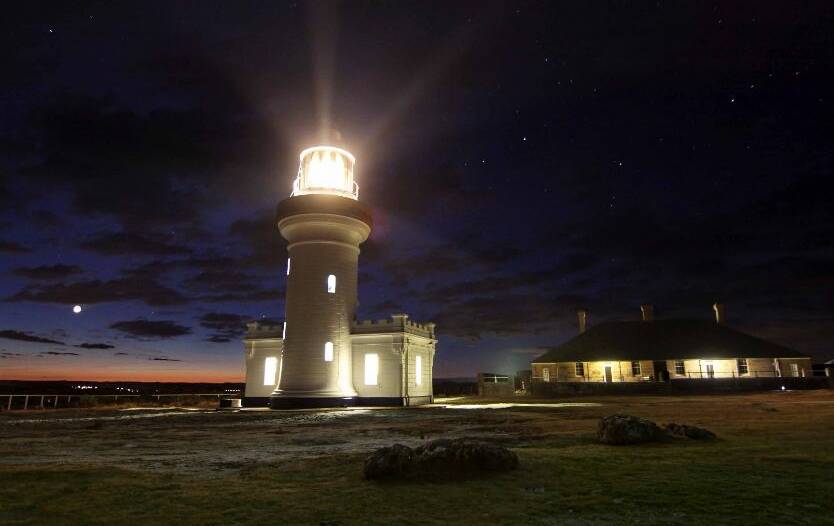
THE historic Point Perpendicular Lighthouse on the Beecroft Peninsula will be operating as part of the 16th International Lighthouse and Lightship weekend.
Subscribe now for unlimited access.
or signup to continue reading
The event is held worldwide, aiming to raise the profiles of lighthouses, lightvessels and other navigational aids by promoting lighthouses and associated maritime heritage.
At the entrance to Jervis Bay, the old Point Perpendicular Lighthouse will operate for three nights, this Friday, Saturday and Sunday, August 18-19-20.
The lighthouse can be viewed from the grounds, which will be open to the public throughout the weekend until 7.30pm.
The Point Perpendicular Lighthouse was first lit in 1899 and operated until it was demanned and replaced by a steel tower and solar beacon in 1994.
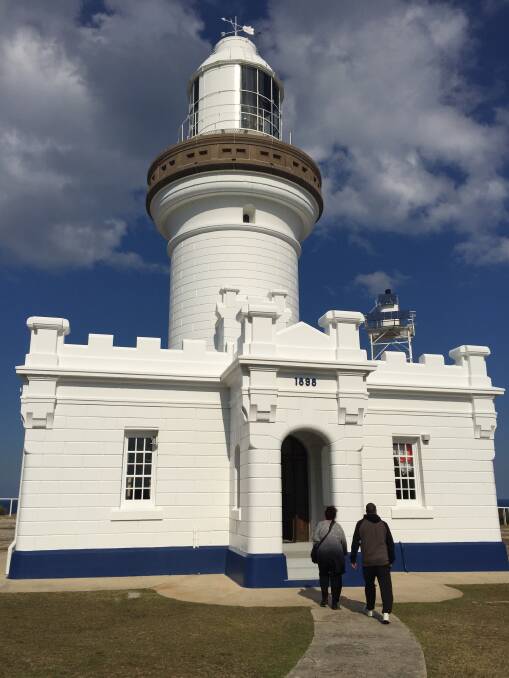
The lighthouse was fully restored by the Department of Defence in 2012.
The restoration of the lighthouse complex demonstrates the commitment to the local community and ensures the survival of the complex for interpretive and adaptive use for years to come.
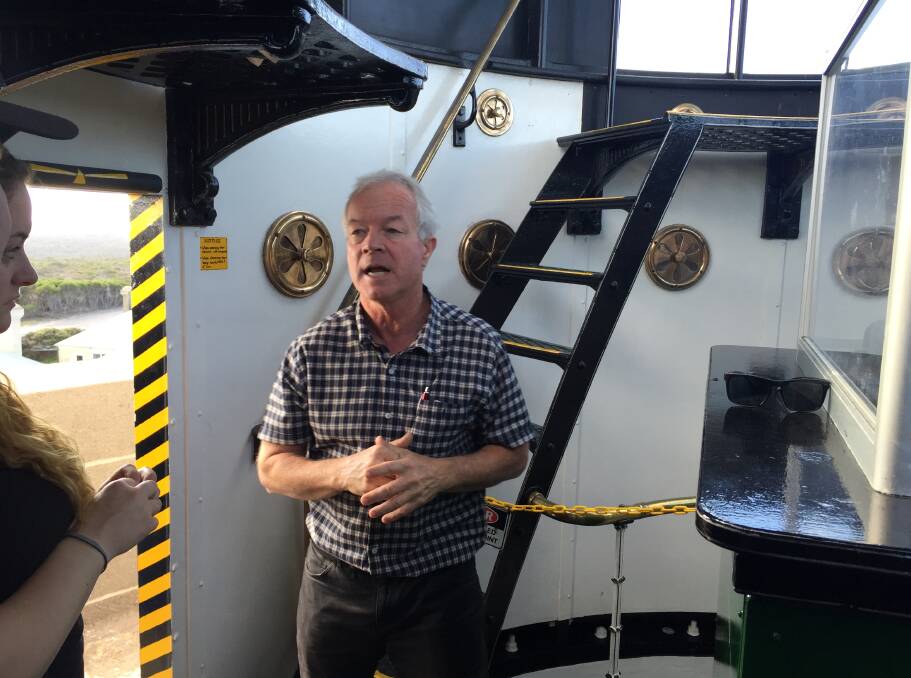
The lighting of the old lighthouse will allow the public the opportunity to view and experience working heritage.
President of Lighthouses Australia, Ian Clifford, said it is hoped the weekend would prompt people people to think about the importance of maintaining these valuable pieces of maritime heritage.
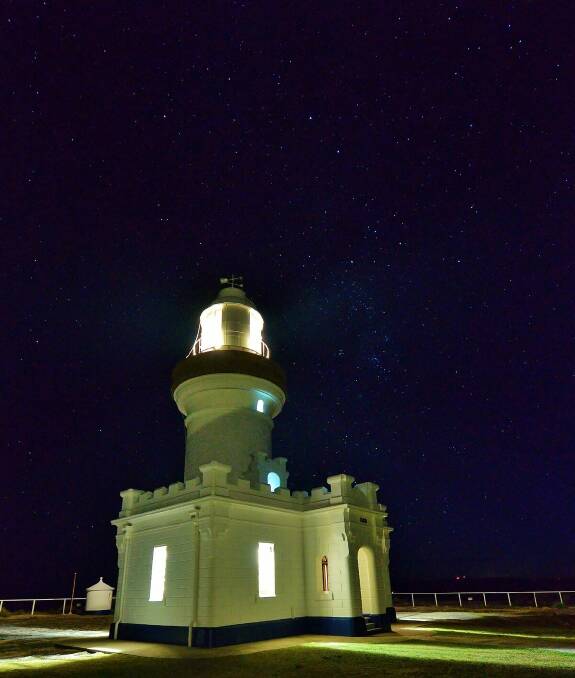
“We must maintain these items before they’re lost,” he said.
Also this weekend, amateur radio operators around the world will be transmitting from lighthouses to recognise the dual role on many lighthouses as signal stations, with the objective of fostering international relations.
More than 300 lights in 50 countries will be participating in this year’s event.
Local lighthouses and their history
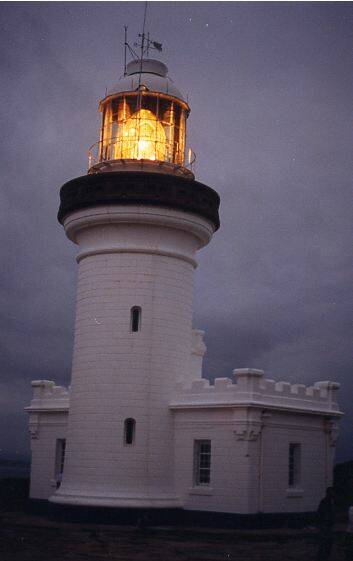
Point Perpendicular Lighthouse
The Point Perpendicular Lighthouse was established in 1899 to replace the inaccurately placed Cape St George Lighthouse.
The original 1860 lighthouse had been built in the wrong position due to inadequate supervision by the authorities of the day.
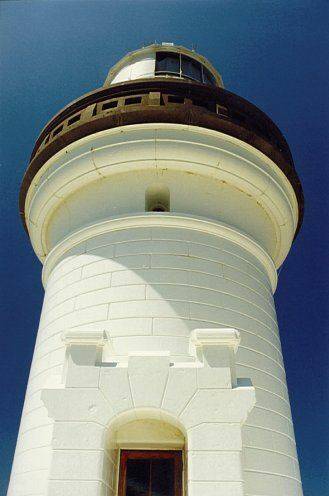
It was not visible to the northern approach at Jervis Bay and failed to warn of offshore reefs.
Even though when the error was realised it was intended to show a light at Cape St George only as a temporary measure it was not until 1898, over 30 years later, that work began on its replacement on the northern side of the entrance to the bay.
The 21 metre tower and cottages, was the first of three similar towers, Cape Byron 1901 and Norah Head 1903, designed by Charles Harding. They are considered a close parody of his predecessor, James Barnett’s work. It was the first lighthouse in Australia to be constructed of pre-cast concrete blocks - made on site from local aggregate - lifted into position above a mass concrete base. The contractor Edward Kelly undertook the work for 20,280 pounds.
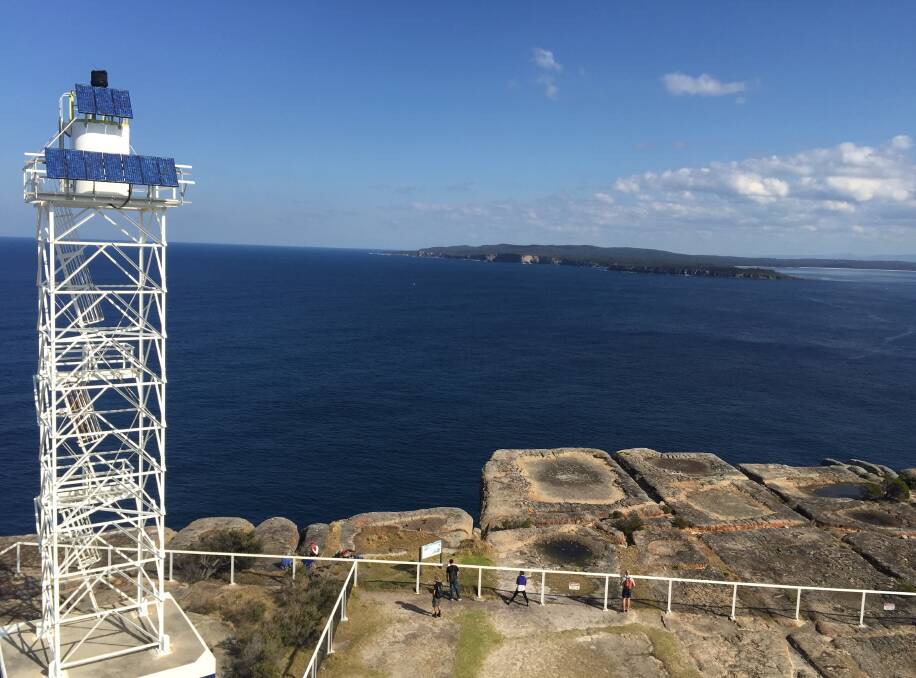
This building technique eliminated the use of heavy scaffolding and shuttering which is necessary for the "concrete poured" construction of towers.
Most of the stores and materials for the new lighthouse were landed at Bindijine Wharf, constructed in 1898, on Honeymoon Bay inside the sheltered side of Jervis Bay itself.
They were then carted by horse and cart to Point Perpendicular.
The window above the main door is interesting as it displays the Waratah, the state flower of NSW, and the construction date of the tower.
Point Perpendicular was lit for the first time on May 1, 1899 by the first head keeper William Parker who had transferred from Cape St George. The optic apparatus was manufactured by the English firm Chance Bros with the magnificent 1st order Fresnel lens and lantern still in place today. To avoid any chance of navigation confusion the Cape St George Lighthouse was quickly demolished. The lantern from Cape St George was recovered prior to demolition and later reused at Crookhaven Heads in 1904.
The original light source was a Chance Bros six-wick concentric oil burner with a 12-gallon lamp producing a light output of 100,000 cd consisting of three white flashes with the sequence: Flash ¾ sec, Eclipse 2 sec, Flash 1 ¼ sec, Eclipse 2 sec, Flash ¾ sec, Eclipse 13 ¼ sec. (Put simply three flashes every 20 seconds) This sequence was produced by rotating the nine-sided lens supported on a conical roller bearing pedestal rotated by a clockwork system using weights and chains once per minute. The weight tubes are still in place in the tower.
On March 17, 1909 the light was converted to pressurised kerosene using an Australian designed and manufactured Schmidt and Ford burner using a single incandescent Welsbach mantle increasing the intensity to 222,000 cd.
On April 1, 1923 an upgrade was made to the Schmidt and Ford burner using 55mm newly developed auto form mantles increasing the output to 316,000 cd. As a testimony to the efficiency of this technology the light remained in this configuration with virtually no or very minor changes until conversion to electric operation on June 12, 1964.
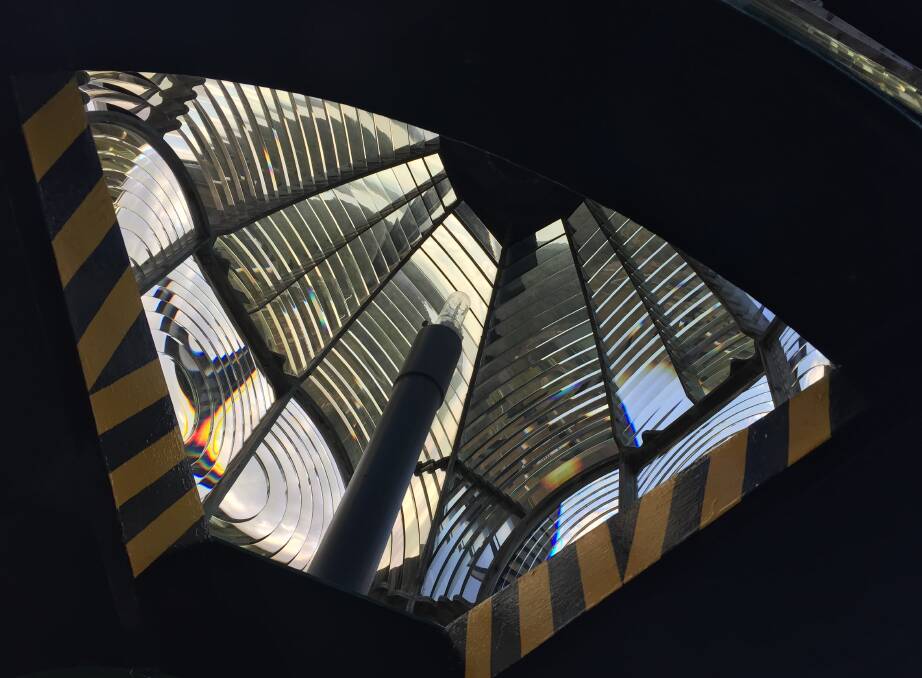
Electricity was supplied by two Lister HR3 air-cooled 25KVA Dunlite generators installed in the former stables. At this time the keepers were reduced from three to two. As part of the conversion the bearing pedestal and vaporised kerosene systems were removed and replaced by the existing Commonwealth Lighthouse Service designed electrically driven bearing pedestal and light source initially using 500-watt lamps later replaced with 1000-watt tungsten halogen lamps. Electric conversion allowed alarms that detected lamp failure or lens rotation failure to sound bells in the keeper’s quarters eliminating the need for all night watches. This technology signalled a major change in the duties of the keepers.
When the old light was finally extinguished by the last keeper, Mark Sheriff, initially on December 21, 1993, a failure of the new solar light on December 27 saw the old light reactivated until finally being disconnected from service by lighthouse mechanic Bernie Ruddy on January 3, 1994 after 94 years of service.

Point Perpendicular is now marked by a solar powered beacon mounted on a lattice tower beside the old light offering one 77,000 cd white flash every 10 seconds with a range of 30km. (A common candle emits light with a luminous intensity of roughly one candela, cd.) .
The heritage listed lighthouse complex was passed from the Australian Maritime Safety Authority to the care of the Department of Defence who remain the custodians of the site.
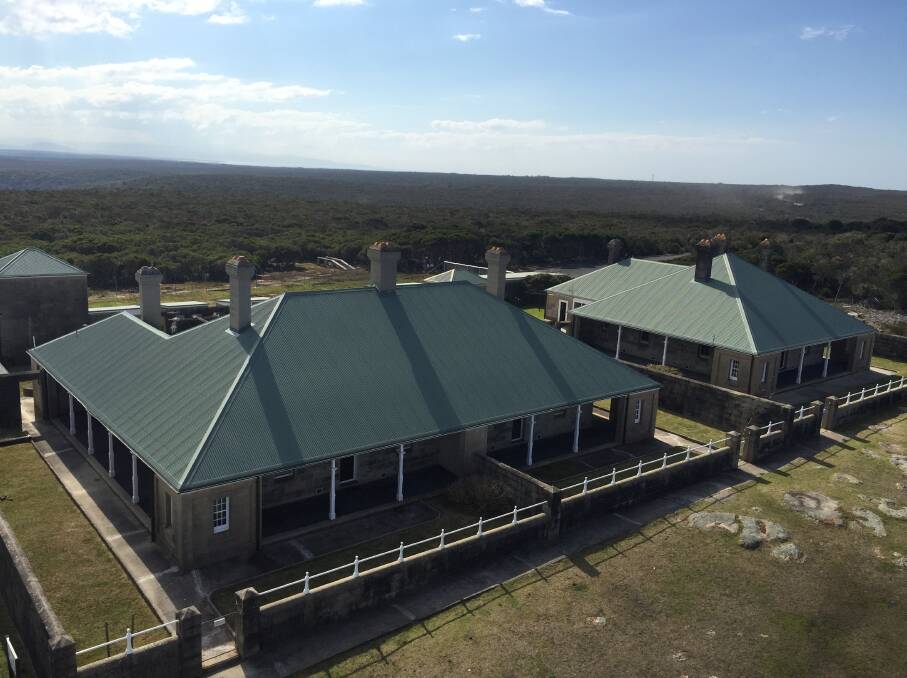
The rare heritage-listed lighthouse was officially re-opened and operated in August 2012 after an extensive six-month refurbishment by the Department of Defence, who manage the building as part of the publicly accessible areas on the Beecroft Weapons Range near Currarong.
Point Perpendicular lighthouse has stood at the entrance to Jervis Bay for 114 years seeing thousands of RAN; merchant and recreational vessels enter and; pass the Bay.
The old Point Perpendicular Lighthouse was first relit by Ian Clifford from Lighthouses of Australia to celebrate its centenary in September 1999. The old light has operated most years as part of International Lighthouse Heritage Weekend and was operated and opened to the public from September 27 to October 4, 2013 in the lead up to the RAN’s International Fleet Review.
- LOCATION: Latitude 35° 5' 37" S, Longitude 150° 48' 19" E (map)
- OPERATOR: Australian Maritime Safety Authority
- EXHIBITED: 1899
- CONSTRUCTION: Concrete Blocks
- CHARACTER: Group Flashing (3) in 20 seconds
- LIGHT SOURCE: 120V, 1,000 Watt, Quartz Halogen Lamp
- POWER SOURCE: Diesel Generators
- INTENSITY: 1,200,000 cd
- ELEVATION: 93 metres
- RANGE: 26 nautical miles (42 kilometres)
- HEIGHT: 21.4 metres
- AUTOMATED: 1993
- DEMANNED: 1993
- DEACTIVATED: 1993
- CUSTODIAN: Department of Defence
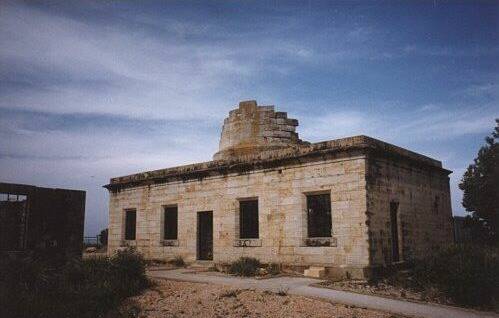
The ill-fated Cape St George Lighthouse
The Cape St George Lighthouse was doomed from its very inception. A result of official bungling and lack of supervision, its light lasted for less than 40 years, after which it was unceremoniously destroyed.
Recommended in 1856, controversy surrounded this light before construction had even began and completed in 1860.
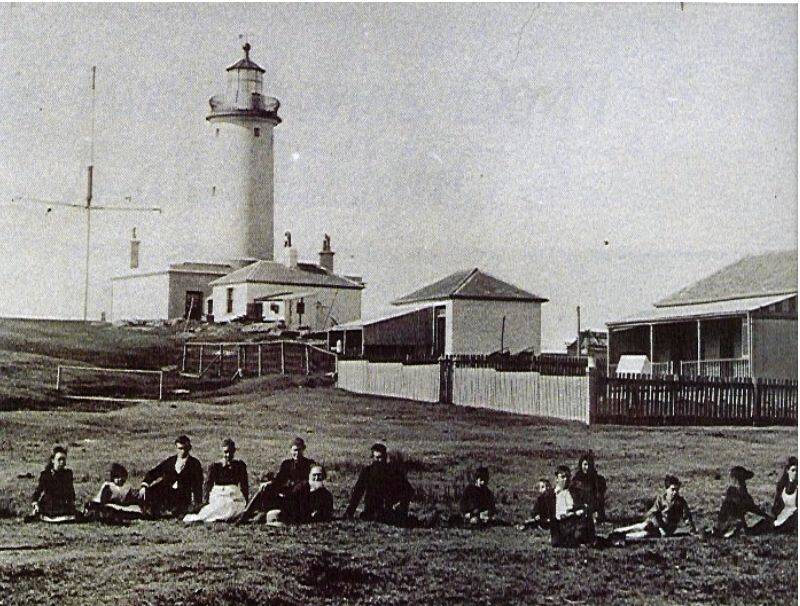
Decisions on the need for a light and its location were made without even consulting the Pilots Board, the controlling authority, about the efficiency of a light at that location.
The problem was that the light was not visible from the northern approach to Jervis Bay, and would barely be visible from the southern approach.
Furthermore, the original map and marking of the proposed lighthouse location were so inaccurate that later there were doubts as whether the light had been erected on the selected sight.
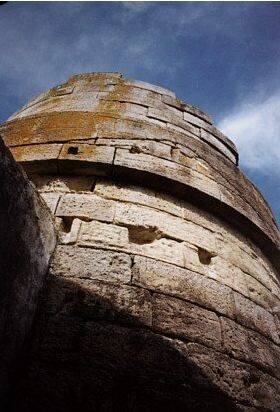
On top of this inaccuracy the contractor seems to have built the light closer to the quarry he was obtaining the stone from.
In fact when inspected by members of the Pilots Board it was found to be two and a half miles north of the intended site.
A select committee was established by the NSW Government to investigate the errors in locating the lighthouse.
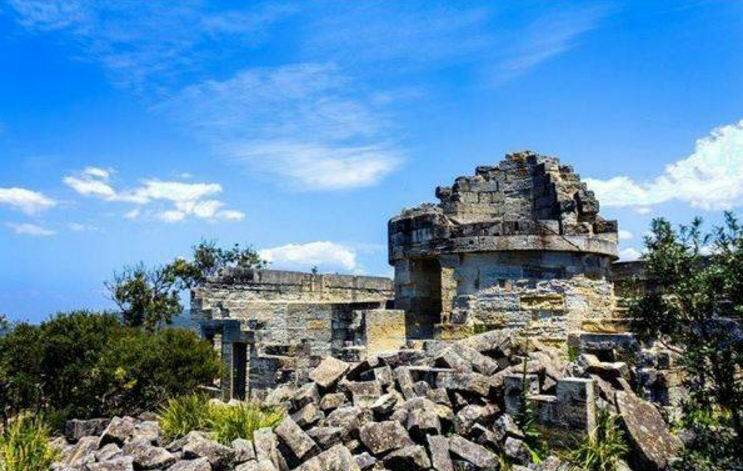
From 1864 to 1893 there were 23 ships wrecked on the NSW South Coast in the vicinity of Jervis Bay.
The light was eventually replaced in 1889 by a new lighthouse at Point Perpendicular, a much more suitable location for a lighthouse on this part of the coast.
The lantern was removed and later used in the Crookhaven Heads Lighthouse built in 1904.
- Last Operation (1899)
- LOCATION: Latitude 35° 09' S, Longitude 150° 39' E (map)
- OPERATOR: New South Wales Pilot Board
- EXHIBITED: 1860
- CONSTRUCTION: Sandstone
- CHARACTER: 1 Flash every 15 Seconds
- LIGHT SOURCE: -
- POWER SOURCE: -
- INTENSITY: -
- ELEVATION: -
- RANGE: -
- HEIGHT: -
- ABANDONED: 1889
- DESTROYED: 1917-1922 Naval Target Practice
- CUSTODIAN: Parks & Wildlife Service NSW
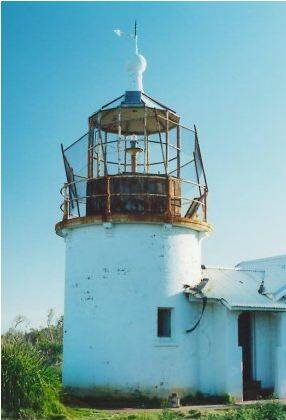
The Crookhaven Heads Lighthouse
Aside from the keepers’ cottages at South Solitary Island, this is probably the most endangered lighthouse in NSW and should be of great concern to lighthouse enthusiasts and the community at large.
The original lighthouse was constructed of timber in 1882 and located as part of the Shoalhaven Signal Station on the beach 200 metres to the west of the current lighthouse.
The apparatus had been a brass lantern.
A red light made from a ship's masthead light supported on two poles had been exhibited by boatmen here at the river entrance since 1872.
The new brick lighthouse to the south of the mouth of the Shoalhaven River was commissioned in 1904 and the old wooden lighthouse was immediately demolished.

The new structure incorporated the lantern from the former lighthouse on Cape St George which in turn had been demolished following the coming into service of the Point Perpendicular light in 1899.
It was at this time that the name of the station was changed to Crookhaven Heads.
The lighthouse has suffered greatly from damage over the years due to its isolation on a headland that juts out from the river mouth.
This was further aggravated by the fact the reserve was like an overgrown garden and it was not at all visible from the nearby village.
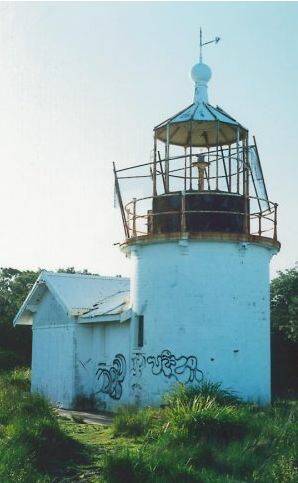
Several years ago the building was renovated but without an ongoing plan or presence it has not taken long for it to fall into disrepair again.
The problem seems to be the isolation of the Crookhaven Lighthouse.
One step undertaken was the strip away the thicket that had grown around the old lighthouse with the belief that if the light was more visible it would be less of an incentive for vandals to move in a deface and damage the building.
But until a permanent solution is found that protects the site authorities are reluctant to provide further funds to restore the lighthouse.
In 2010 a plan was hatched to attempt to restore the lighthouse.
The the historic lantern was gingerly disassembled in December 2011 and lifted off the structure by a Navy helicopter from HMAS Albatross for restoration.
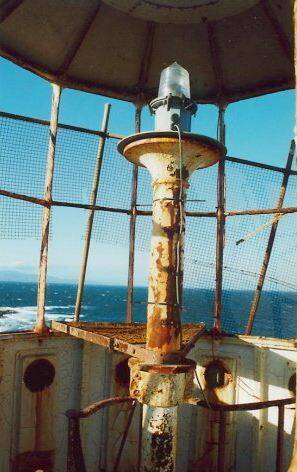
A deal with the South Coast Correctional Centre was to see inmates help return the metal lantern to its former glory, and they also cleaned and removed some of the vegetation around the site.
Since then arguments between Shoalhaven City Council and the Department of Lands, as to who are in control or responsible for the site have stalled the project.
- LOCATION: Latitude 34° S. Longitude 150° E. (map)
- OPERATOR: Waterways Authority - NSW
- EXHIBITED: Timber Tower 1882, Brick Tower 1904
- CONSTRUCTION: Brick
- CHARACTER: Fixed Red
- LIGHT SOURCE: -
- POWER SOURCE: Solar Power
- INTENSITY: 200 cd Fixed Red
- ELEVATION: 22 metres
- RANGE: 6 nautical miles (11 kilometres)
- HEIGHT: 7 metres
- AUTOMATED: -
- DEMANNED: -
- DEACTIVATED: -
- CUSTODIAN: –
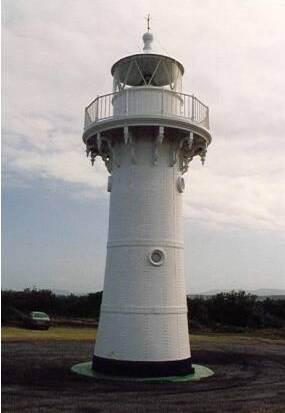
The Warden Head Lighthouse at Ulladulla
Originally built on the Ulladulla Breakwater in 1873, the light was shifted to Warden Head in 1879.
It is one of only two towers in NSW made from wrought iron plates.
The combination of the Bomborras (north and south reefs) and Warden Head lead to the loss of several ships and lives as they tried to enter the Port of Ulladulla.
The lighthouse was built in 1873 and was originally located at the entrance to the harbour in the fishing town.
It was designed in the Colonial Architect's Office by Edward Moriarty in the same style as the Wollongong Breakwater Light.
Joseph Mather won the contract to build both lighthouses, and this was built after he had completed the first one at Wollongong.
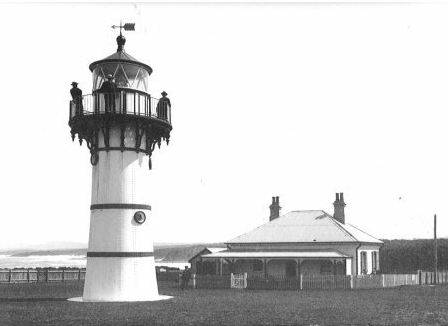
These two lighthouses were unusual in NSW in that they were made of curved wrought-iron plates riveted together to form a shell, in the fashion of some Queensland, South Australian and Western Australian lighthouses.
The wrought iron plates were designed and assembled in Mather's foundry at Wollongong, after which they assembled them on site.
The tower is topped with a small ornate balcony with an iron handrail.
The first apparatus was a fixed oil wick light that gave off 800 candelas.
Under James Barnet's direction the lighthouse was relocated to Ulladulla's south headland, Warden's Head, in 1889.
In 1920 the original oil lamp was replaced with a flashing light powered by acetylene gas for automatic operation and the station was demanned.
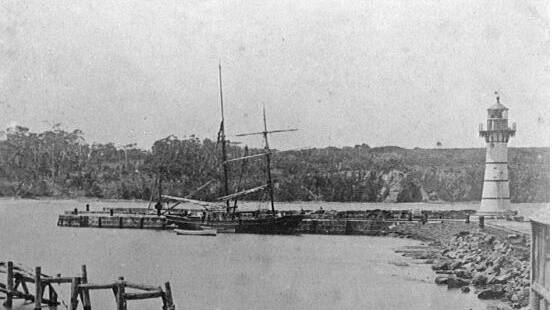
The next conversion was to to electricity in 1964. The light is now battery operated and float charged from 240v mains supply.
The current road out to Warden's Head and car park was developed by the Ulladulla Council in the 1940s to encourage visitors to the lighthouse.
- LOCATION: Latitude 35° S, Longitude 150 ° 5' E
- OPERATOR: Waterways Authority - NSW
- EXHIBITED: 1873 at Ulladulla, 1889 at Warden Head
- CONSTRUCTION: Wrought Iron
- CHARACTER: Group Flashing 2 Every 10 Seconds
- LIGHT SOURCE: 120V, 1,000 Watt, Quartz Halogen Lamp
- POWER SOURCE: 110 volt DC Battery Charger from Mains Power
- INTENSITY: 28,000 cd
- ELEVATION: 34 Metres
- RANGE: 17 Nautical Miles (28 Kilometres)
- HEIGHT: 12.2 Metres
- AUTOMATED: 1920
- DEMANNED: 1920
- DEACTIVATED: No
- CUSTODIAN: Waterways Authority - NSW
- HERITAGE: Register of the National Estate
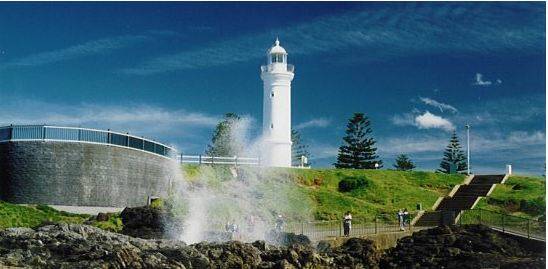
The Kiama Lighthouse
The light was established in 1887, 10 years after the creation of the Robertson Basin, a manmade harbour to service Kiama's supply of crushed blue metal and paving blocks for the streets of Sydney.
The tower, built on Blowhole Point, is constructed of brick and rendered outside with concrete.
The total cost for the tower and apparatus was £1,350.
The original apparatus was an oil burner with a catadioptric fixed lens producing a 600 candela green light that was visible for nine miles.
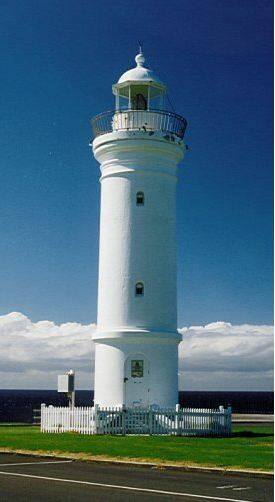
This was upgraded to the local town coal gas in 1908 with an intensity of 1,500 candelas and a range of 15 miles.
This was further upgraded to acetylene gas and group flashing in 1920. At this point the light was demanned, though Brewis stated in 1913 that the light was unwatched, the keeper's cottage being vacant.
In 1969 the light was converted to 240v mains electricity. A 120v battery bank is used for standby.
The establishment of the light was a big event as noted in the Kiama Independent of August 10, 1886:
Situated on the round apex of Blowhole Point, the Kiama lighthouse stands from sea level to the light at a height of 224 feet. The foundation is concrete, 14 feet in depth and 12 feet in diameter; from the bottom of the foundation to the top of the entrance is 16 feet. The height of the building from the floor to the coping is 36 feet, to the light is 40 feet, and to the top of the weather vane is 50 feet.
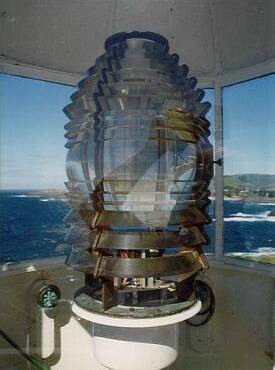
The building is of brick, cemented outside and plastered within. The ascent is accomplished by means of three iron ladders, leading from one storey to another, the staircase being lighted by side lights.
The top of the structure is surrounded by a very artistic railing; and the light, which will be of a similar magnifying power to the Hornby light, near Watson's Bay, is very shortly expected to arrive from England.
The lighthouse is now quite finished, so far as the contractors are concerned, with the exception of receiving two or three coats of paint, which is now being done.
A neat hexagonal fence is being erected round the building which will give it the trim and neat appearance and so closely associated in our minds with all lighthouses.
(Note: that the reference to the tower being 224 ft above sea level is quite erroneous as it was actually 121 ft)
- LOCATION: Latitude 34° S. Longitude 150° E (map)
- OPERATOR: Waterways Authority - NSW
- EXHIBITED: 1887
- CONSTRUCTION: Rendered Brick
- CHARACTER: Group Flashing (4) in 20 Seconds
- LANTERN: Chance & Co 4th Order 250mm focal radius lens
- LIGHT SOURCE: 120V, 1,000 Watt, Quartz Halogen Lamp
- POWER SOURCE: Batteries charged from mains supply
- INTENSITY: 28,000 cd
- ELEVATION: 36.3 metres
- RANGE: 17 nautical miles (31.5 kilometres)
- HEIGHT: 15.5 metres
- AUTOMATED: 1920
- DEMANNED: 1920
- DEACTIVATED: No
- CUSTODIAN: Waterways Authority - NSW
- HERITAGE: -
- Histories courtesy of Lighthouses of Australia Inc and Ian Clifford.


